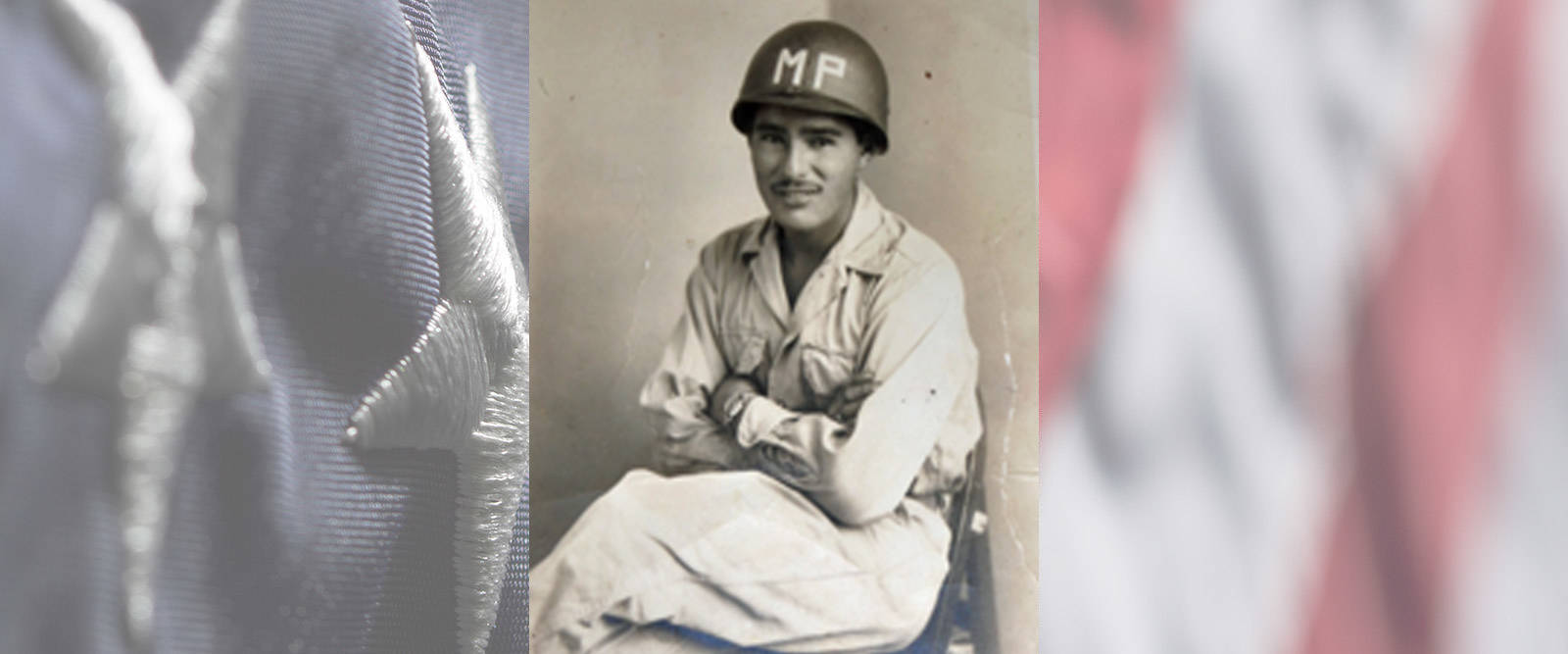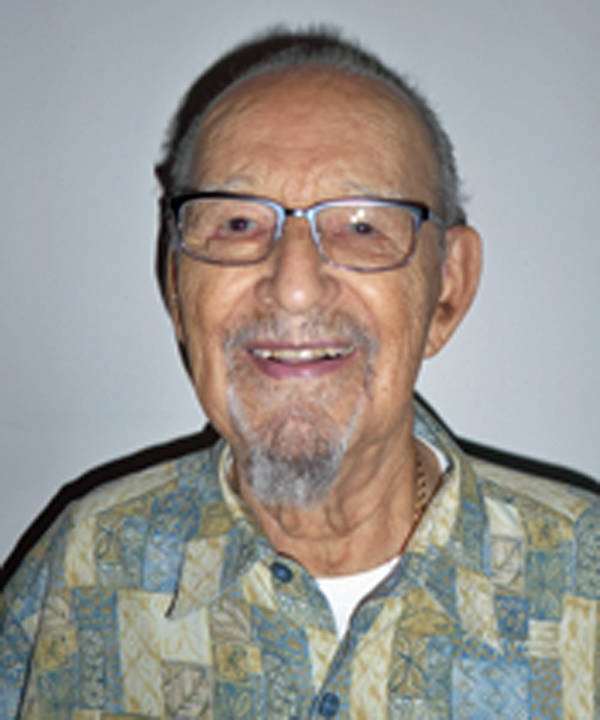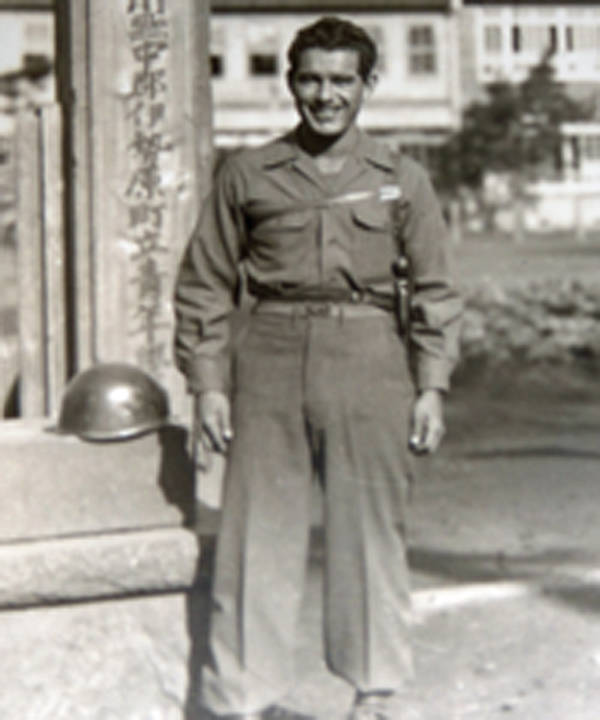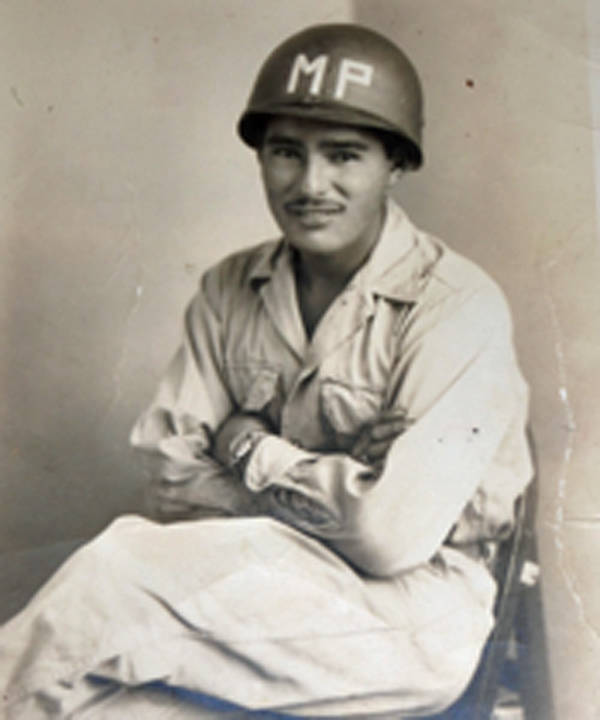U.S. Army Korean War Lansing, IL Flight date: 09/12/18
By Nancy Angel, Honor Flight Chicago Veteran Interviews Volunteer
Martin Garcia was born and raised in Floresville, Texas. Growing up, times were hard and jobs were scarce, so as a teenager Martin joined the Civilian Conservation Corps (CCC). Although he wasn’t the required 18 years of age, he convinced them, with the help of his mother, that he was old enough to join. Working for the CCC, Martin was able to help his father support his mother and sisters. After three years in the Civilian Conservation Corps, Martin was recruited into the Army and was inducted in San Antonio, TX.
He went through Basic Training in San Antonio, where he remembers ladder drills and underwater maneuvers, followed by specialty training in New Orleans. He was then sent to Sacramento, CA, where he and other soldiers were packed and on alert, ready to be shipped overseas. When they got the word, Martin and the other servicemen had to quietly board the ship at 2 o’clock in the morning. The ship was crowded with men from all branches of the armed services for the long journey of more than 30 days. Martin recalls that there was an announcement telling them when they had crossed the equator. He also remembers that there was a Japanese destroyer following them for a time and it even fired on them, but the transport ship was able to avoid the destroyer by moving in a zigzag pattern.
The ship brought Martin to Cebu Island in the Philippines, where he was assigned to the 23rd Infantry Division, known as the Americal Division. There he fought on the front lines against Japanese soldiers in the mountains. Although Basic Training had been difficult, he felt it didn’t truly prepare him for the realities of combat. “They train you one way in the United States, and when you get overseas, they train you an entirely different way.” The conditions on the island were very rugged. Occasionally the soldiers had tents but generally they slept on the ground, on a rock, or in bunkers they dug.
According to Martin, “some guys had the guts to sleep,” but for him it was very difficult. In addition to the fear of Japanese soldiers sneaking up on them, there were also rats crawling around in the dark, so sleep did not come easy. He says you could hear the rats rustling in the leaves, but the soldiers moved very quietly. Pursuing the Japanese soldiers up in the mountains was dangerous. There were many coconut trees where the enemy hid, with a good view to shoot at the American soldiers. Although there were trails leading up the mountains, they were sometimes booby trapped and there was always the danger of stepping or tripping on a hidden wire and setting off bombs. The duty was very strenuous, stressful being difficult to rest, so soldiers were sent back to the rear echelon every couple of weeks to have some good meals, a shower and some uninterrupted sleep. When back on the front lines, Martin was a BAR man, meaning he shot the Browning Automatic Rifle, a gun which was shot off a tripod. He had to carry a large tripod in addition to the gun. He states he was the #2 BAR man which meant that he followed a distance behind the #1 BAR man. He recalls one occasion where the #1 BAR man was shot as they advanced, leaving him on his own. Unfortunately, that was not the only soldier he saw killed in combat.
Martin was also a truck driver for the rear echelon. He drove trucks containing food and other supplies up to the front lines. There were other soldiers who were scouts, guarding him and his truck when he drove into the dangerous combat zone. Although he was armed, he only carried a .45 caliber pistol when driving. He had a radio in the truck, so that other soldiers could radio him if they saw Japanese soldiers firing from the mountains. He recalls his truck being shot at, but it was a steel truck and he was never injured.
After their time on Cebu Island, Martin’s unit was transferred to Tokyo, Japan by ship. By the time they arrived, the Japanese had surrendered, so there would be no further combat for Martin. His unit remained in Tokyo for a few weeks before Martin and others were sent to a small Japanese town, where they were assigned to guard a large supply of silver bricks. Martin was also assigned as a truck driver while in Japan. As a driver his assignments changed from day to day and he was always on the move. He drove a variety of vehicles, sometimes jeeps, sometimes different types of trucks. What he was transporting varied as well – food, supplies, ammunition and soldiers. Sometimes he didn’t even know what was in the truck. For a few months, he was assigned to drive a Captain around to his various meetings and appointments.
When Martin had served his required time in the Army, he was asked if he wanted to go back to the United States, and he definitely did! He was placed on a troopship from Japan back to Washington, D.C. From there, he took a train to Fort Sam Houston in San Antonio, where he was honorably discharged. He was contacted by the Army after his discharge, asking if he’d like to rejoin the Army and be promoted to a higher rank, but he declined.
Good jobs were still scarce in San Antonio, so he went to Detroit where jobs were plentiful. He got a job with Ford Motor Company, where he remained for 35 years. Once again, like his time in the Army, he worked as a truck driver, driving carriers and other vehicles for Ford. While in Detroit, he met and married his wife, Amelia. They raised two daughters, who eventually gave them a grandson and granddaughter.
Martin retired in 1988, and he and his wife spent many years as snowbirds in San Antonio, until her illness and passing. Martin now enjoys spending time with his family and splits his time between his two daughters in the Chicago suburbs and his San Antonio residence.
Thank you Martin for your service and sacrifice during the Korean War. Enjoy your well-deserved day of honor in Washington, D.C.!






